The Freedom Riders, 1961 (Edexcel GCSE History): Revision Note
Exam code: 1HI0
Timeline
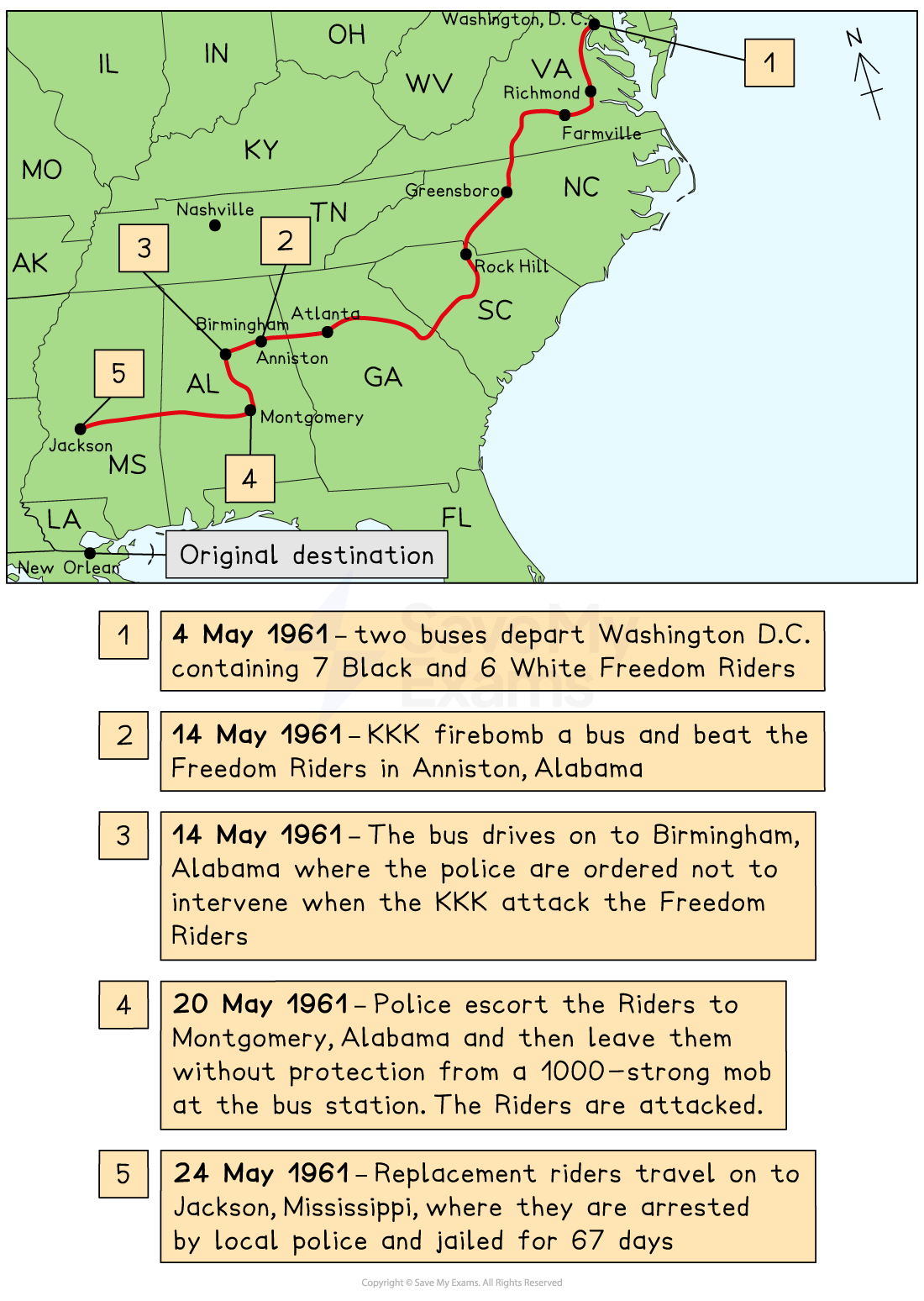
Summary
Victories for the civil rights movement in the Supreme Court meant that segregation in more areas of life was becoming illegal. However, the new laws needed to be enforced and there was growing frustration in civil rights groups that the rulings of the Supreme Court were just being ignored in many areas of the South. In 1961, some of them decided to draw attention to the fact that segregation still existed by travelling by bus through many Southern states. They did attract attention but also suffered violent attacks on several points of the journey and hundreds of ‘Freedom Riders’ ended up arrested and imprisoned.
Who were the Freedom Riders?
In 1956, the Montgomery Bus Boycott and legal challenges led to the Supreme Court ruling that public transport must desegregate
In 1960, the Supreme Court ordered that all bus station facilities, such as waiting rooms and toilets, must also desegregate
In 1961, The Congress of Racial Equality (CORE) and the Student Non-Violent Co-ordinating Committee (SNCC) decided to test how much the law was being enforced and to highlight that segregation still existed in the South
The National Director of CORE and twelve volunteers decided to travel by bus from Washington DC to New Orleans
They set off on 4th May and intended to arrive in New Orleans on 17th May, 1961 - the seventh anniversary of the Supreme Court’s judgement in Brown v. Topeka
They called themselves the Freedom Riders
Ku Klux Klan violence & the Anniston bombing, May 1961
The Freedom Riders used Whites-only facilities without incident as they travelled through the states of Virginia, North Carolina, South Carolina and Georgia
Things turned violent when they arrived in Alabama
Their bus was firebombed by members of the Ku Klux Klan (KKK) in the town of Anniston who then blocked the doors intending the Freedom Riders to burn to death
The bus fuel tank exploded, which caused the mob to move away and enabled the Freedom Riders to escape
Once off the bus, however, they were viciously attacked
The mob intended to lynch the Freedom Riders but gunshots into the air from local police prevented their murders
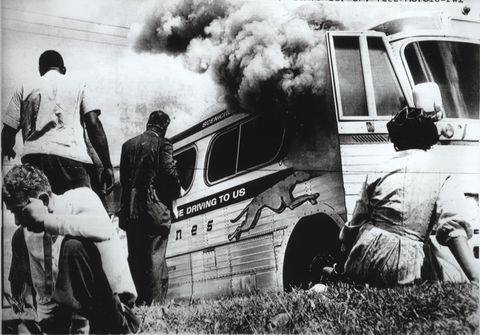
The Freedom Ride after Anniston
The violent attacks continued when they reached Birmingham, Alabama later in the day
A large mob had assembled to meet their arrival
Police chief, Eugene ‘Bull’ Connor left the Freedom Riders defenceless by ordering his officers not to intervene
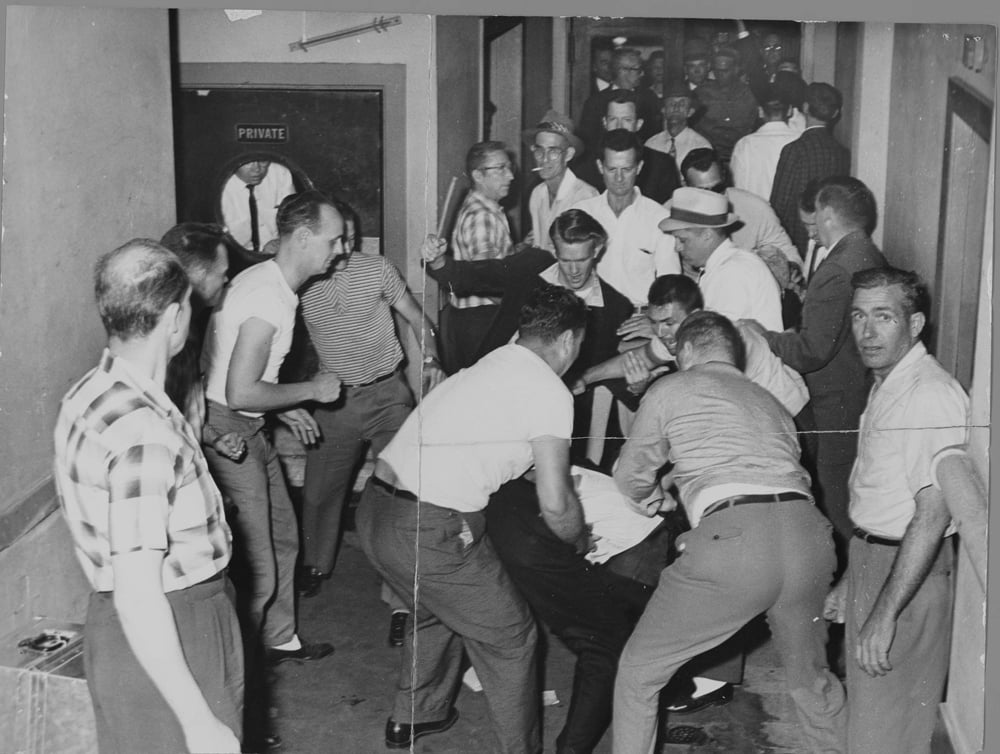
More violent attacks occurred when the Freedom Riders arrived in Montgomery, Alabama
The police escort that had protected them as they left Birmingham abandoned them on the outskirts of town
A mob of over 1,000 people was awaiting their arrival at Montgomery Bus Station and they were attacked once again
The injured protestors were replaced by new Freedom Riders and continued the journey to Jackson, Mississippi
The National Guard escorted the bus
All of the Freedom Riders were arrested as soon as they tried to use the segregated facilities at Jackson Bus Station
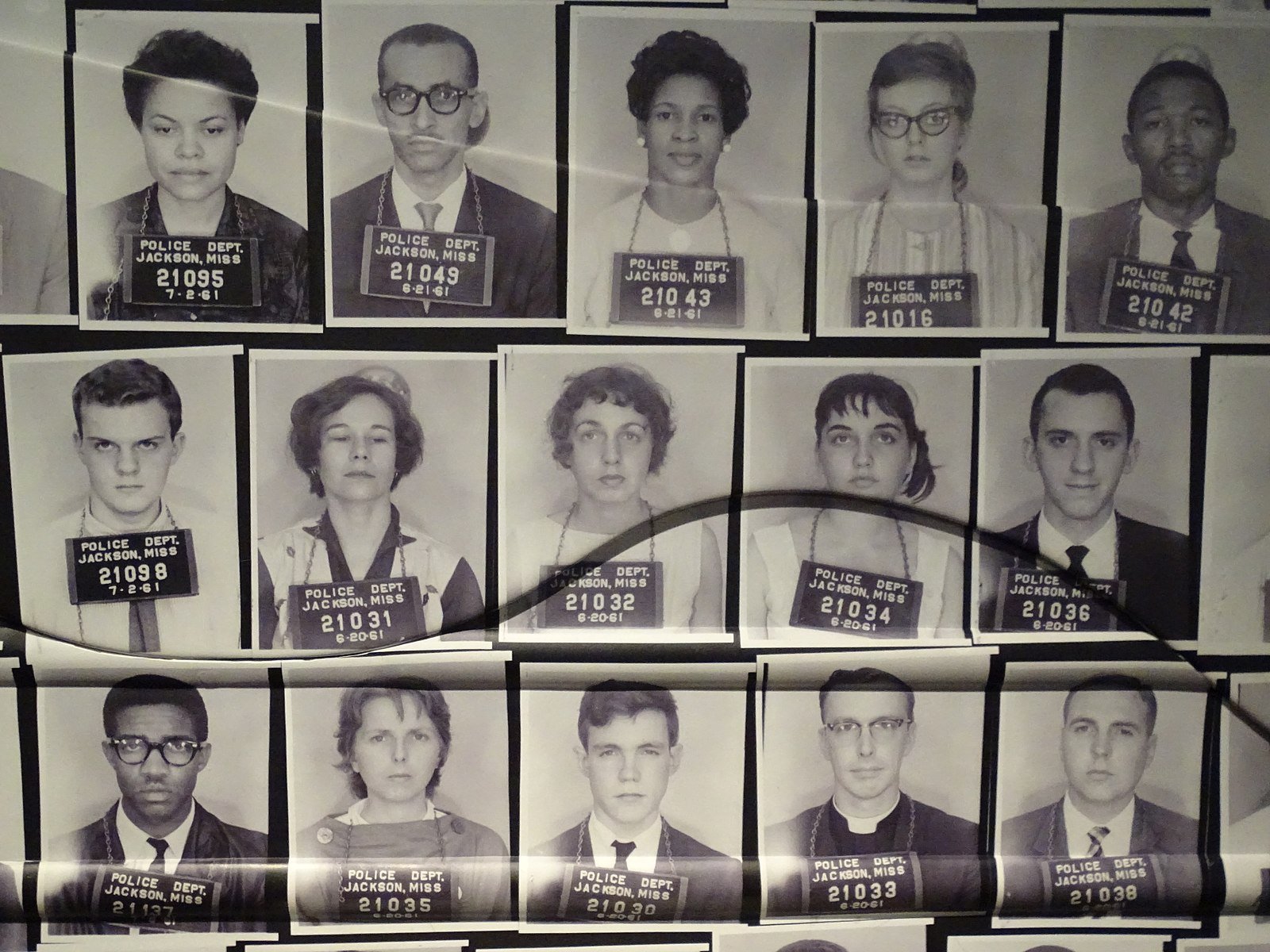
The significance of the Freedom Rider movement
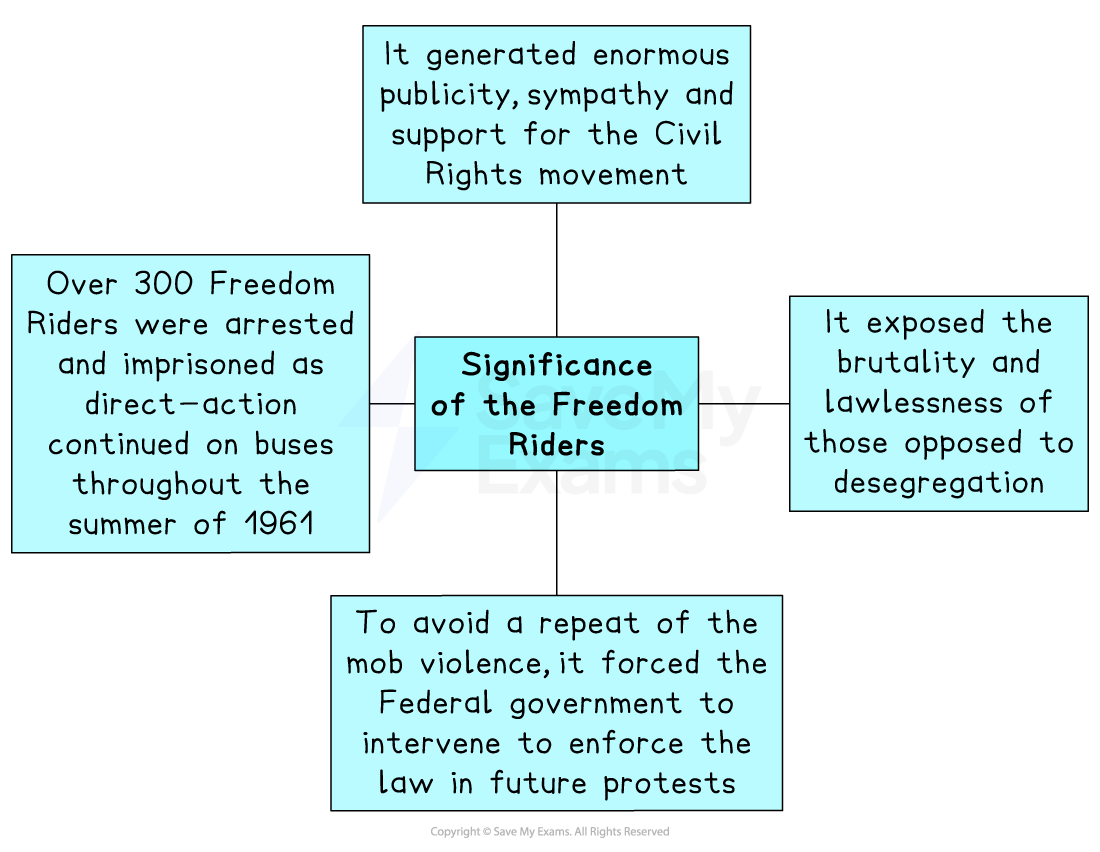
Examiner Tips and Tricks
Success in this paper relies on your ability to be able to identify differences in historical interpretations. People often have very different viewpoints on the same event and your task on question three is to identify the key difference between two interpretations. This means you have to look past the surface details, summarise both views and explain why they are different

Unlock more, it's free!
Did this page help you?